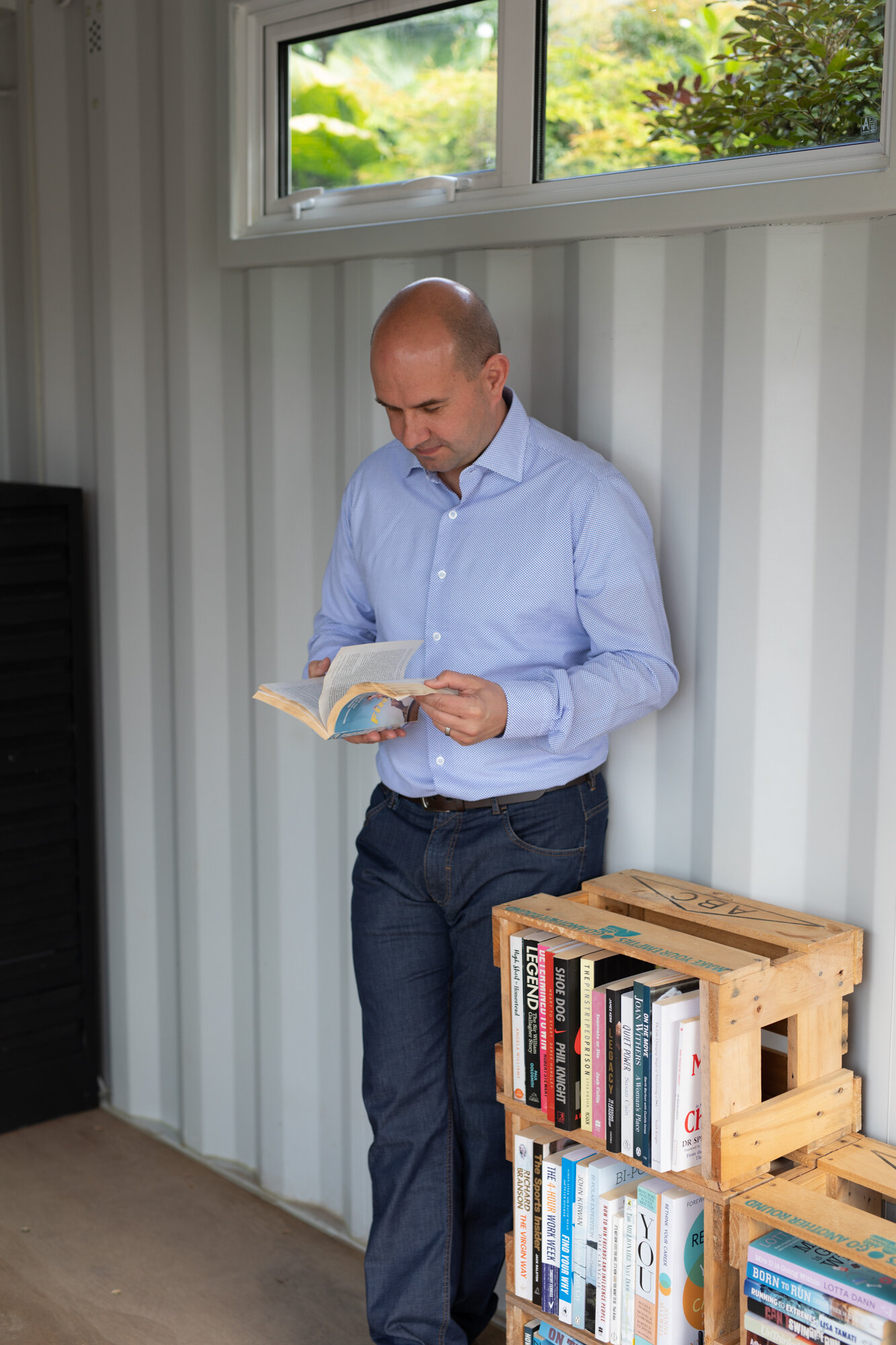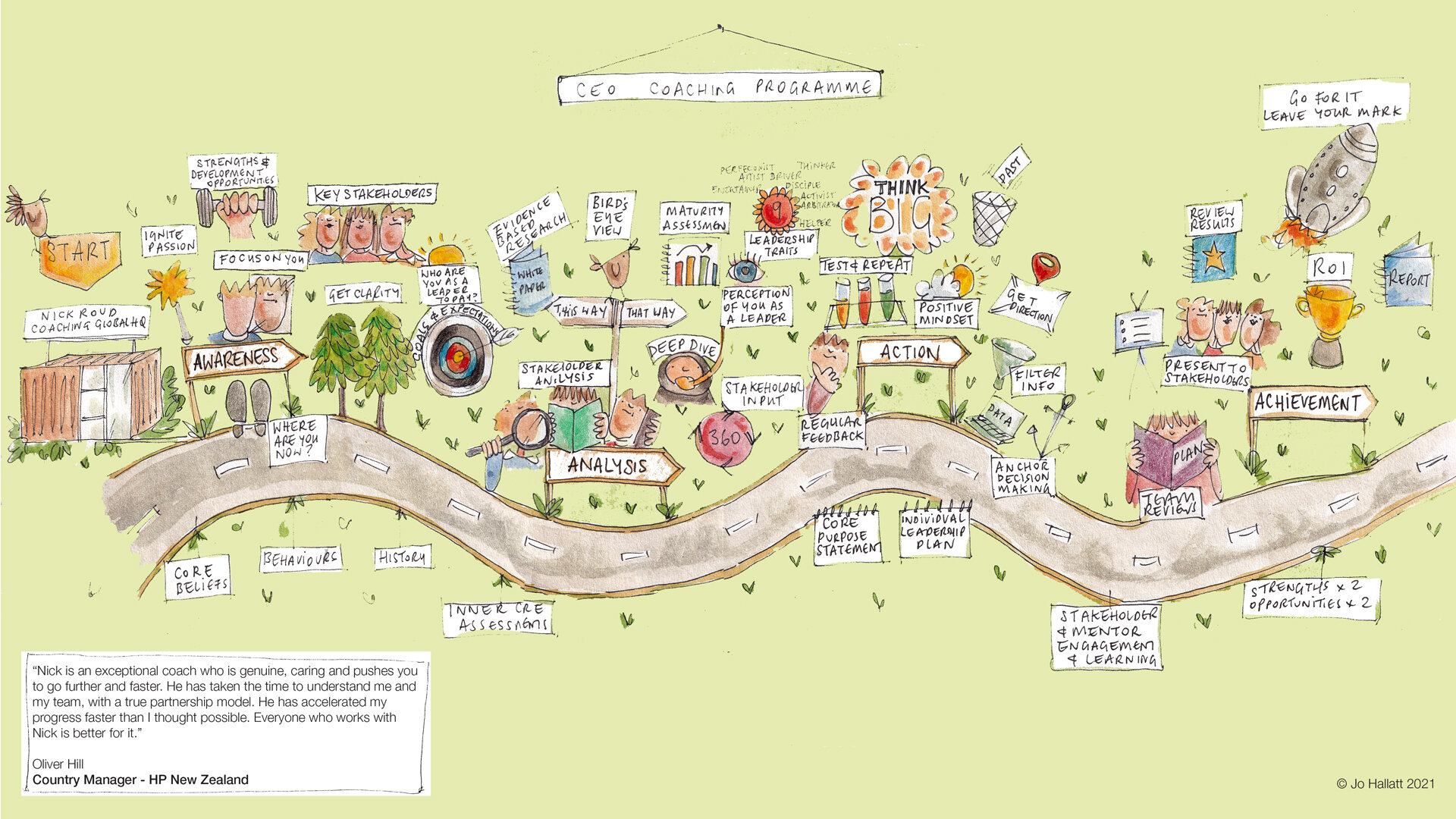2016- 2021
Executive & Leadership Blog. Nick Roud.
5th Oct 2021 from our global headquarters aka the 20ft shipping container to you, Welcome
>
“Leadership is lifting a person’s vision to high sights, the raising of a person’s performance to a higher standard, the building of a personality beyond its normal limitations”
Managing High Potential Leaders in itself is a challenge. Don’t confuse high-performing with high-potential. Whilst one can be seen as ‘doing an outstanding job’ the other is really laying the foundations to his/her greatness, they have growth potential. What are you and your organisations actually doing right now to retain your future leaders?
It takes time to mature as a leader. Lay strong foundations
In my observations as an executive coach and coaching some of the best rising stars around, not all high performing people will go onto make exceptional leaders. Stepping up to a bigger role takes a lot of work not only by the individual but also by the team around them.
44% of Millennials are now in Leadership Positions! Most believe they are receiving little or no development in their roles Deloitte Human Capital Trends Report
High Potential Leaders vary raley put their hands up, they sit quietly observing, taking it all in and when they speak others really do listen. They have that mana that you are unable to buy or replicate, they appreciate others views and get to really understand various layers of the organisation and people. These are the future!
Identified future leaders should not be seen as a lottery, nor should it be seen that Just because you have ‘been in the company for ages’ you should get the next big role. When I am partnering with an organisation and identifying future leaders a lot of work goes into identifying people from all across the organisation………observing the non-spoken stuff.
Just because an individual is performing really well in the job and over achieving doesn’t necessarily make that individual the very best leader for the future. A leader is a human who can bring others along, can stand alone and challenge others perspectives from an empathetic stance, can share a realistic vision and purpose for the common good and above all can unite others to do outstanding work that will stretch them beyond what they thought possible.
Define what high potential means for your organisation
Every organisation around the world will have different needs, thoughts expectations of what hight potential means to them. They will be complety different to the company next door. So before investing and developing your future leaders you should spend the time to identify the characteristics that your organization will need. Discuss and agree on what behaviours do we need! Maybe break this down to a 3 year (out) plan.
I got to be part of a high performing sports team in Australia. Asked to work with the coaching team and bring in a different lens. What I noticed and observed in my work has stuck with me and I use many of their principles here in my leadership coaching work.
How they identified future leaders started right down at grass roots and worked its way back to the elite team. They understood how long they would retain the current elite playing group, Identified what was making that team of individuals gel and along with a few other key things they then started to look across all the various age groups within the club.
Questions were asked, who should we develop, who might make it, who should we move on etc. Sitting alongside the Recruitment Manager for this club I learnt and observed a great deal and a deeper appreciation into
· Characteristics
· Values
· Behaviors
· Tendencies
All the above went into identifying future talent
So here are some things to consider as a leader,
· spend the time to understand your people
· high performing may not equal high potential (high potentials have grit, drive, determination to do more for themselves and others)
· potential refers to having a growth mindset. They want to push the boundaries, they want to understand, learn and grow and they will not settle till they themselves have achieved
· measure, measure and measure, ensure you are using up to date relevant assessments and tools to help all your people no matter what level they currently sit. (a great deal of my coaching work is to help professionals understand what are their strengths and development areas and tools to shape their leadership pathways)
· sit with your quiet people, they don’t often put their hand up but it is my humble view that those are the ones to really wrap up, understand. Just like when I sit in a dressing room observing teams before a game, at half time and at the end of the game. It’s the ones who can just give a look, an arm of encouragement, it’s the ones who lift others up when they are doubting themselves, it’s the ones who help others – it the quiet ones who don’t need to shout from the rooftops……..those are the individuals to really invest in.
Utilize assessments to identify talent and make sure you measure progress
In my coaching work everything is measured, we use individual leadership assessments, 360 leadership assessments and at various milestones we measure progress. If we do not measure how do we actually know we are improving?
Having a benchmark for what high potential looks like is the foundation to our assessments. Giving future leader key information / key data that they can relate to is vital to utilizing our assessments. We have taken out the science and ensured the language is relatable, meaningful and that the user will use. (I am a big believer that we should not do assessments and chuck them in the top draw – they should be used daily as an enabler for the future leader to work on). So grab hold of assessments and digest with a fine tooth comb.
Create Individual Development Plans that have mini milestones.
No leader who I have the privilege of coaching can focus on more than 3 things. Its just not possible and its not how I get results. If together we have identified from the assessments that a leader need to develop/grow in 8 areas we must be realistic, we should only focus on 1, 2 or 3 key areas. Those that will make the biggest impact on that leader and the areas that he/she really wants to develop.
When working with the sports team a physio wanted a player to really hone in on his core stability. The individual didn’t buy into it he wanted to focus in on other areas of his game. When I was speaking with the player I spoke about what if’s what if he felt stronger around the mid section, would those niggles in his back possibly go away, what if he started to swim/aqua run could that allow him to recover quicker for the next game.
Again as coaches we knew he had a weakness but we had to be able to relate to him so he got buy in and would put in the necessary time and effort that it would take to strengthen that area. Just like coaching a future leader, I use what ifs, how can we together look at this development areas a bit differently and therefore agree how to positively progress things.
Coaching is not a let’s fix you situation. Coaching shouldn’t be bought into a company as a last resort, coaching works when the individual really wants to be the very best he/she can be. By creating an indivual action based plan we can then get to work!
Get feedback
I always make sure any coaching work we do has LOTS of feedback in it. High performing future leaders are developing they tell me they yearn and need feedback. To many future leaders say to me I don’t get any feedback from my peers from my staff or from my leaders.
feedback make it a priority
If companies are not defining what high potential looks like, if they are not assessing and really utilizing relevant leadership assessments, if they are not helping those high performing professionals with an individual plan or ensuring consistent feedback is given they run the risk of losing talent to other companies that will do all the above and more.
Are you interested in learning more about High Potentials Leadership coaching, are you interested in coaching, do you have aspirations to lead then check out our individual high potentials leadership programme starting in March 2022 or contact Nick to discuss your coaching needs,
Yours in coaching
Nick Roud – Master Certified Executive Coach
Global Award Winning Executive Coach 2021



